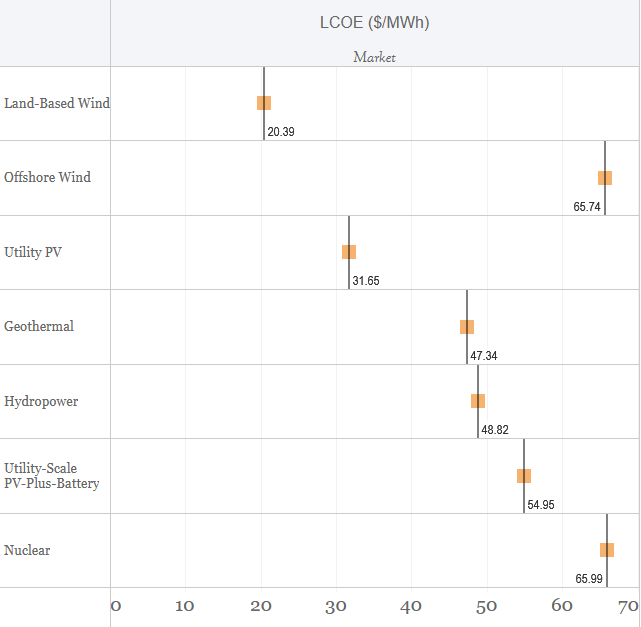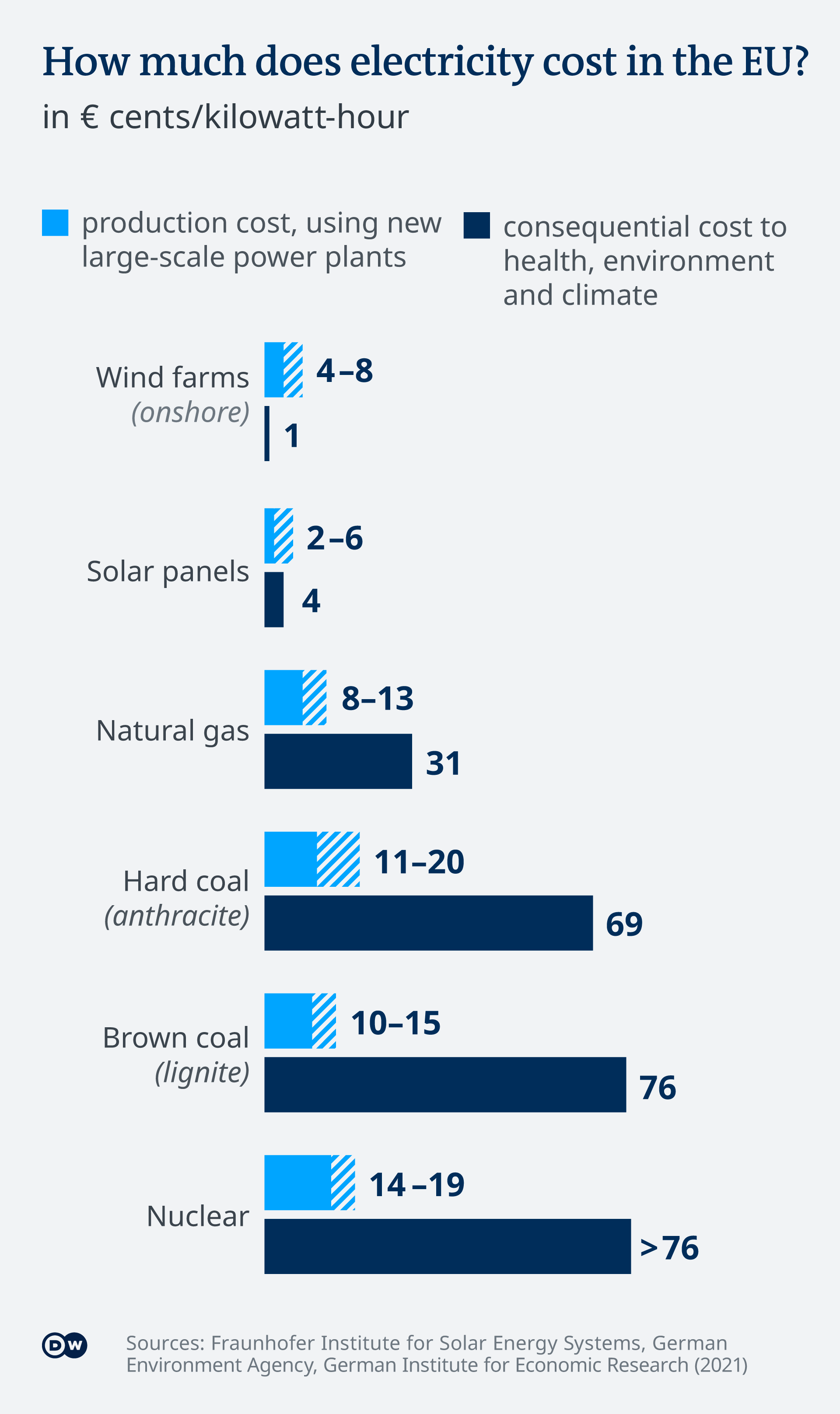When it comes to generating electricity, nuclear is hugely more expensive than renewables. Every 1000Wh of nuclear power could be 2000-3000 Wh solar or wind.
If you’ve been told “it’s not possible to have all power from renewable sources”, you have been a victim of disinformation from the fossil fuel industry. The majority of studies show that a global transition to 100% renewable energy across all sectors – power, heat, transport and industry – is feasible and economically viable.
This is all with current, modern day technology, not with some far-off dream or potential future tech such as nuclear fusion, thorium reactors or breeder reactors.
Compared to nuclear, renewables are:
- Cheaper
- Lower emissions
- Faster to provision
- Less environmentally damaging
- Not reliant on continuous consumption of fuel
- Decentralised
- Much, much safer
- Much easier to maintain
- More reliable
- Much more capable of being scaled down on demand to meet changes in energy demands
Nuclear power has promise as a future technology. But at present, while I’m all in favour of keeping the ones we have until the end of their useful life, building new nuclear power stations is a massive waste of money, resources, effort and political capital.
Nuclear energy should be funded only to conduct new research into potential future improvements and to construct experimental power stations. Any money that would be spent on building nuclear power plants should be spent on renewables instead.
Frequently asked questions:
- But it’s not always sunny or windy, how can we deal with that?
While a given spot in your country is going to have periods where it’s not sunny or rainy, with a mixture of energy distribution (modern interconnectors can transmit 800kV or more over 800km or more with less than 3% loss) non-electrical storage such as pumped storage, and diversified renewable sources, this problem is completely mitigated - we can generate wind, solar or hydro power over 2,000km away from where it is consumed for cheaper than we could generate nuclear electricity 20km away.
- Don’t renewables take up too much space?
The United States has enough land paved over for parking spaces to have 8 spaces per car - 5% of the land. If just 10% of that space was used to generate solar electricity - a mere 0.5% - that would generate enough solar power to provide electricity to the entire country. By comparison, around 50% of the land is agricultural. The amount of land used by renewable sources is not a real problem, it’s an argument used by the very wealthy pro-nuclear lobby to justify the huge amounts of funding that they currently receive.
- Isn’t Nuclear power cleaner than renewables?
No, it’s dirtier. You can look up total lifetime emissions for nuclear vs. renewables - this is the aggregated and equalised environmental harm caused per kWh for each energy source. It takes into account the energy used to extract raw materials, build the power plant, operate the plant, maintenance, the fuels needed to sustain it, the transport needed to service it, and so on. These numbers always show nuclear as more environmentally harmful than renewables.
- We need a baseline load, though, and that can only be nuclear or fossil fuels.
Not according to industry experts - the majority of studies show that a 100% renewable source of energy across all industries for all needs - electricity, heating, transport, and industry - is completely possible with current technology and is economically viable. If you disagree, don’t argue with me, take it up with the IEC. Here’s a Wikipedia article that you can use as a baseline for more information: https://en.m.wikipedia.org/wiki/100%25_renewable_energy

